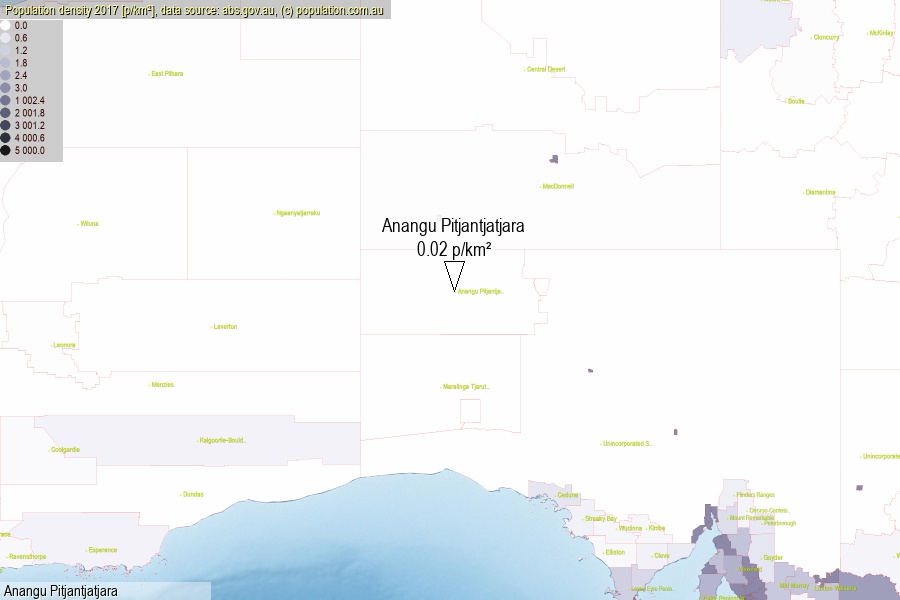 population.com.au
population.com.auLast official estimated population of Anangu Pitjantjatjara Aboriginal Council (as Local Government Area) was 2 523 people (on 2017-06-30)[2]. This was 0.01% of total Australian population and 0.146% of SA population. Area of Anangu Pitjantjatjara is 102 353.10 km², in this year population density was 0.02 p/km² . If population growth rate would be same as in period 2016-2017 (+1%/yr), Anangu Pitjantjatjara population in 2025 would be 2 732. [0]



Click to enlarge. Anangu Pitjantjatjara is located in the center of the images.
Population [people], population density [p./km²] and population change [%/year] [2]
[1996-2001] +0.54 %/Y
[2001-2002] -2.33 %/Y
[2002-2003] -2.15 %/Y
[2003-2004] -2.91 %/Y
[2004-2005] -3.24 %/Y
[2005-2006] -3.31 %/Y
[2006-2007] +1.82 %/Y
[2007-2008] +2.72 %/Y
[2008-2009] +2.48 %/Y
[2009-2010] +3.39 %/Y
[2010-2011] +3.91 %/Y
[2011-2012] -0.34 %/Y
[2012-2013] -1.09 %/Y
[2013-2014] -0.65 %/Y
[2014-2015] -1.42 %/Y
[2015-2016] -2.73 %/Y
[2016-2017] +1.00 %/Y
[0] Calculated with linear interpolation from officially estimated population
[1] Read more about LGA and Australian Statistical Geography Standard (ASGS) on abs.gov.au
[2] Population data from Australian Bureau of Statistics (Population and density: 2017; change: 2016-2017)
[3] Digital Boundaries: Australian Statistical Geography Standard (ASGS) 2016.